Friday night’s opening ceremony of the London 2012 Olympics was simply stunning. The brains behind the vision was Danny Boyle, and he brought to life the story of Great Britain and Northern Ireland through costume, music, drama…. and parchuting James Bond and The Queen into the stadium.
I noticed Boyle’s Twitter biog describes him as ‘just a storyteller.’ What a storyteller he is!
How can storytelling be used within an organisation to inspire employees?
 As part of my series of guest writers, coach Vera Woodhead has tackled this topic for my readers. Don’t forget if you’d like to write for my blog, check out my guest guidelines and do get in touch.
As part of my series of guest writers, coach Vera Woodhead has tackled this topic for my readers. Don’t forget if you’d like to write for my blog, check out my guest guidelines and do get in touch.
Vera (pictured) works with leaders to craft, develop and communicate their leadership brand. She has a flair for helping people to flourish and create purposeful and fulfilled lives.
This taps into their strengths and is used to make a difference to themselves, their teams, organisations and community. Read her blogs and connect with at her @verawoodhead or via www.edimo.co.uk. Over to you Vera…
Storytelling as a communication tool
On 10 July I was tuned into Radio4 on my way to coach a client. At 9am the economic historian Professor Niall Ferguson started his presentation of the BBC Reith Lectures on what constitutes a vibrant and independent civil society.
To be honest, it didn’t sound that interesting and I was just about to switch over when my attention was caught as he begun …“nearly 10 years ago I bought a house on the coast of South Wales. With its rugged, windswept Atlantic coastline, its rain-soaked golf courses, its remnants of industrial greatness….”, he continued his tale of clearing up the thousands of plastic bottles that littered the coastline in front of his house, intrigued I listened on…
Two days earlier I had watched Andy Murray lose the Wimbledon final and witnessed the transformation of how viewers perceive him.
His image of being dour, dispassionate and media shy had failed to endear him to the nation – until that tearful and poignant runner up speech.
Here, the public saw another side to the player, which connected with the audience and won the hearts and minds of the people.
The threads that connect these two vignettes are storytelling and engaging with people on an emotional level.
Storytelling has been around for thousands of years and we can probably all remember being captivated by stories in our childhood. Where the characters come to life and you ‘see’ the rich visual images that your imagination has fabricated. As we get immersed into a story, we begin to become a part of it, our hearts are touched and we can ‘feel’ what the characters are ‘feeling’.
Crucial communication strategy
Storytelling is a crucial communication strategy and a powerful method for anyone to use.
It is especially useful for leaders, for example when leading people into the future, taking them through change, influencing, unifying people towards a common purpose, transmitting values, motivating and inspiring. Incorporating stories into your messages help to develop a shared sense of identity.
 Create a story and you are doing more than just ‘telling them’.
Create a story and you are doing more than just ‘telling them’.
You can listen to someone tell you to ‘to change’ but it becomes much more powerful if you listen to a story of someone who has gone through change. It creates an empathetic understanding, which enables you to learn and figure out the lesson yourself.
Storytelling brings hard data, facts and figures to life.
It is difficult to connect, inspire and get people to act on just logic and reason alone. An emotional engagement results in greater buy-in. You cannot achieve that with a mere PowerPoint. Can you imagine any of the following being delivered in this way?
“Let us not wallow in the valley of despair, I say to you today, my friends…. I have a dream that one day this nation will rise up…” (Martin Luther King Jr)
“….and that government of the people, by the people, for the people, shall not perish from the earth” (Abraham Lincoln)
“We shall go on to the end….we shall fight on the beaches, we shall fight on the landing grounds, we shall fight in the fields…”(Winston Churchill)
“And so, my fellow Americans: ask not what your country can do for you, ask what you can do for your country” (John F Kennedy)
How do you make your story compelling? Here are 10 tips for telling a good tale:
- Know your audience -whatare their needs and interests, what issues matter to them?If you work in an organisation, listen, ask questions, collect evidence, engage with differing perspectives beforehand
- Connect by adding a human element to your story…connect the abstract, numbers, data to someone
- Keep it short, simple and relevant to the context
- Appeal to shared values and beliefs
- Be authentic and speak from the heart – your passion and sincerity will shine through
- Be inclusive and use ‘we’ and not ‘I’ , ‘they’, ‘them’
- Engross your audience with the use of metaphors, analogies and make use of specific details
- Bring your characters to life – appearance, occupation, department they work in …
- Base your story on reality…otherwise you will get found out eventually
- Make use repetition – memorable phrases or sound bites
Language is a powerful tool through which leaders can influence.
Armed with a good story you can inspire, encourage and energise. Here is an excellent demonstration in the way of a short video by Margaret Martin, a social enterprise founder pitching her story for funding for the Harmony project.
Thank you for sharing your insights Vera.
How do you use storytelling in your organisation? I’d love to feature some examples.
Feel free to comment below or contact me,
Rachel.
First published on the All Things IC blog 28 July 2012.
Want to learn more about internal communication?










I work as an Internal Communications Specialist and write a lot of content for our intranet. I think the most important thing I do is to explain the question WHY in everything that happens in our company. Why are we doing this project? Why are we going through theese changes? Why did we get this result? A tool for answering the question WHY is to tell the stories behind everything we do. I always try to interview the people behind decisions, new products or projects and have them explain with their own words: the background, the process and the next steps. I always use photographs of actual employees and our organization. I never choose clip art or unpersonal org.pics from the web. It’s important to have content from our own organization, featuring our own people. It’s important to tell that everyting is about us.
Thanks for your comment Anna. I agree, answering the question why is extremely important, particularly if you want employees to understand what is happening in the company. Explaining the context, reasoning and logic for decisions and discussions should bring them along with the vision and purpose and ensure everyone knows what is happening.
I hear you on the clip art and over-staged photos, it’s tough to always find relevant pics, but publishing a photo of a random person rather than one of your employees is never ideal. Thanks again for sharing your thoughts, Rachel.
[…] available to you, such as videos, infographics, podcasts, narration and images. Read more at this All Things IC blog […]
[…] Writing for AllThingsIC, coach Vera Woodhead explains the power of a story to bring hard data, facts and information to life, creating a shared sense of identity. Leaders and communicators who utilize storytelling, Vera argues, can “inspire, encourage and energise […] An emotional engagement results in greater buy-in. You cannot achieve that with a mere Powerpoint.”. […]